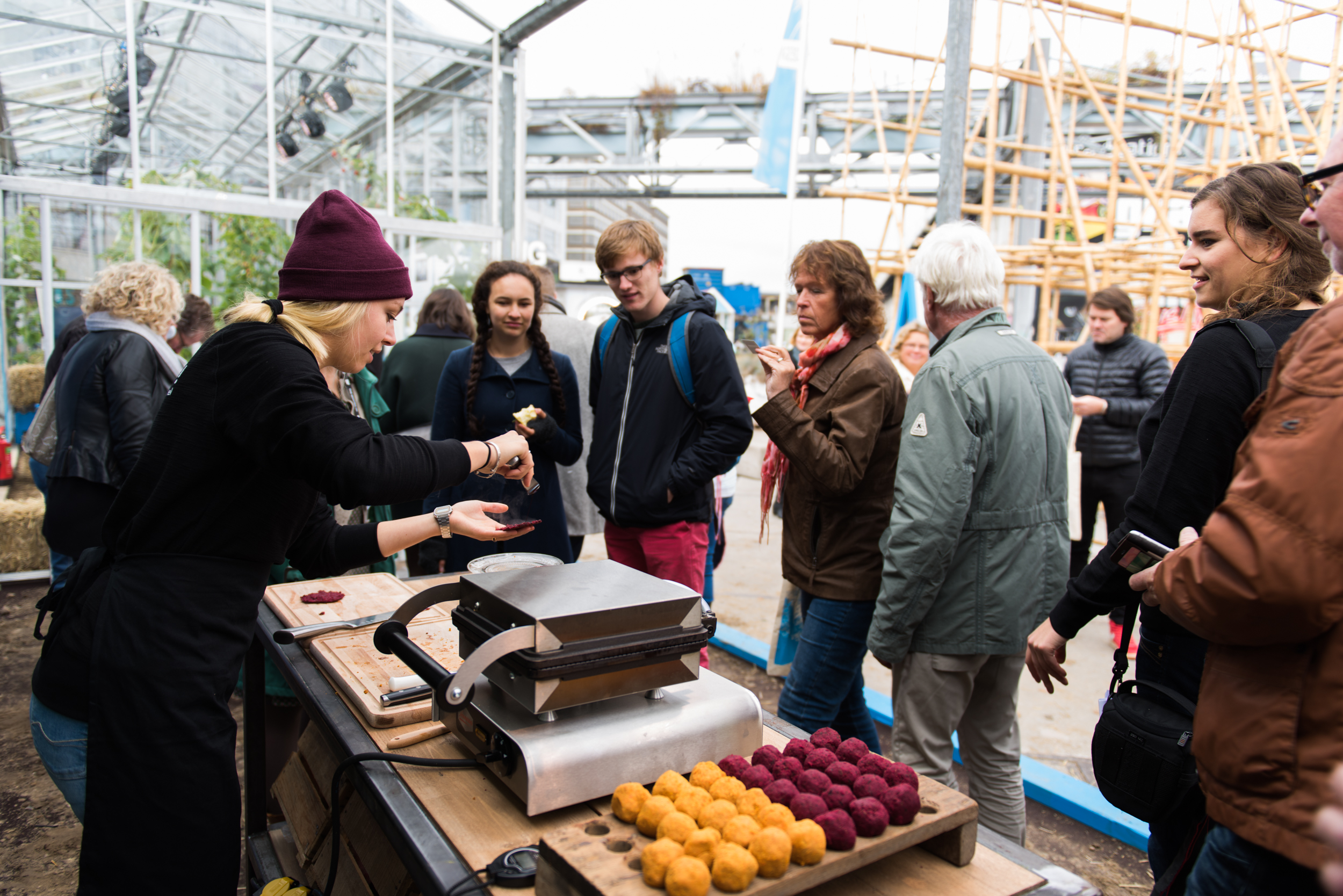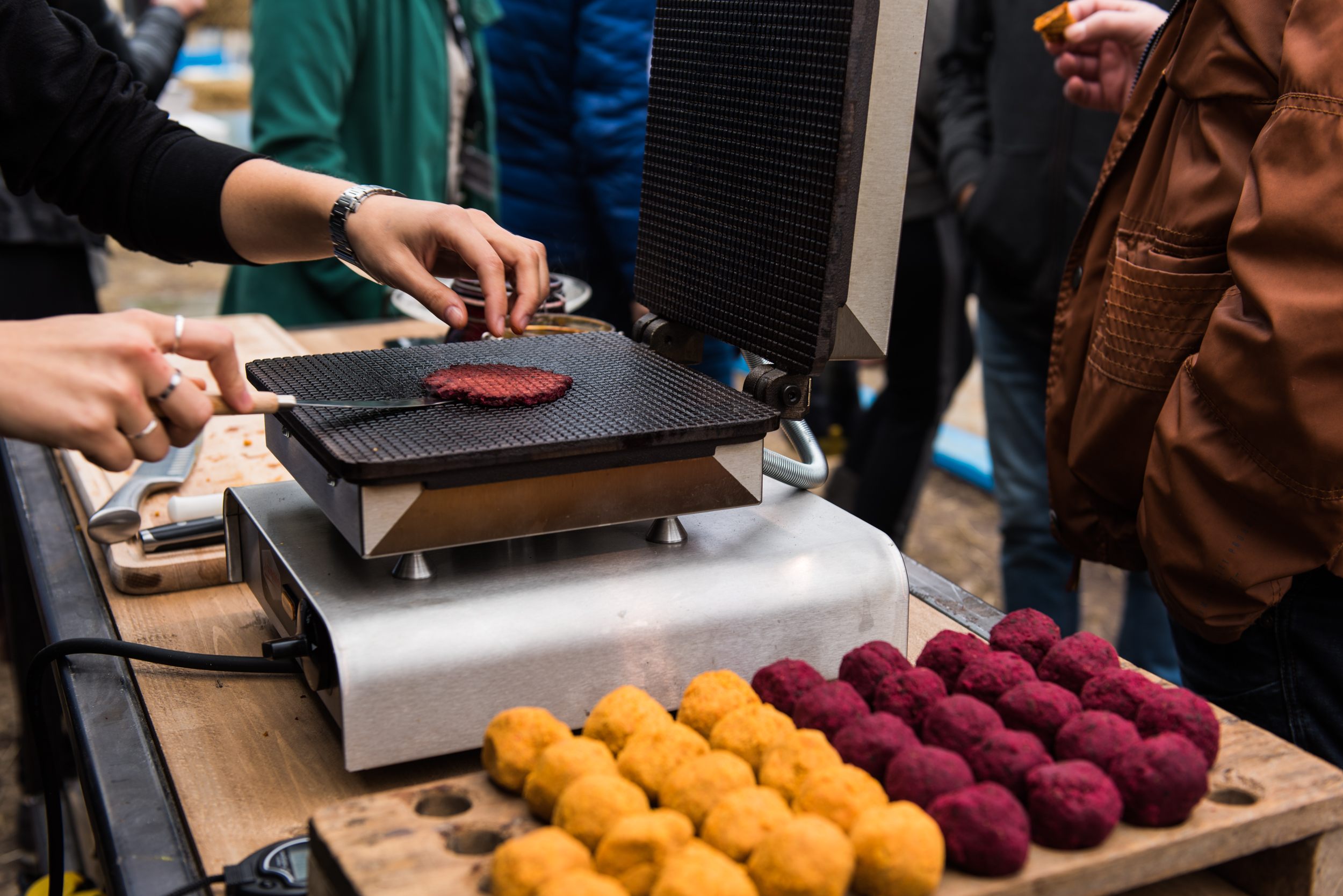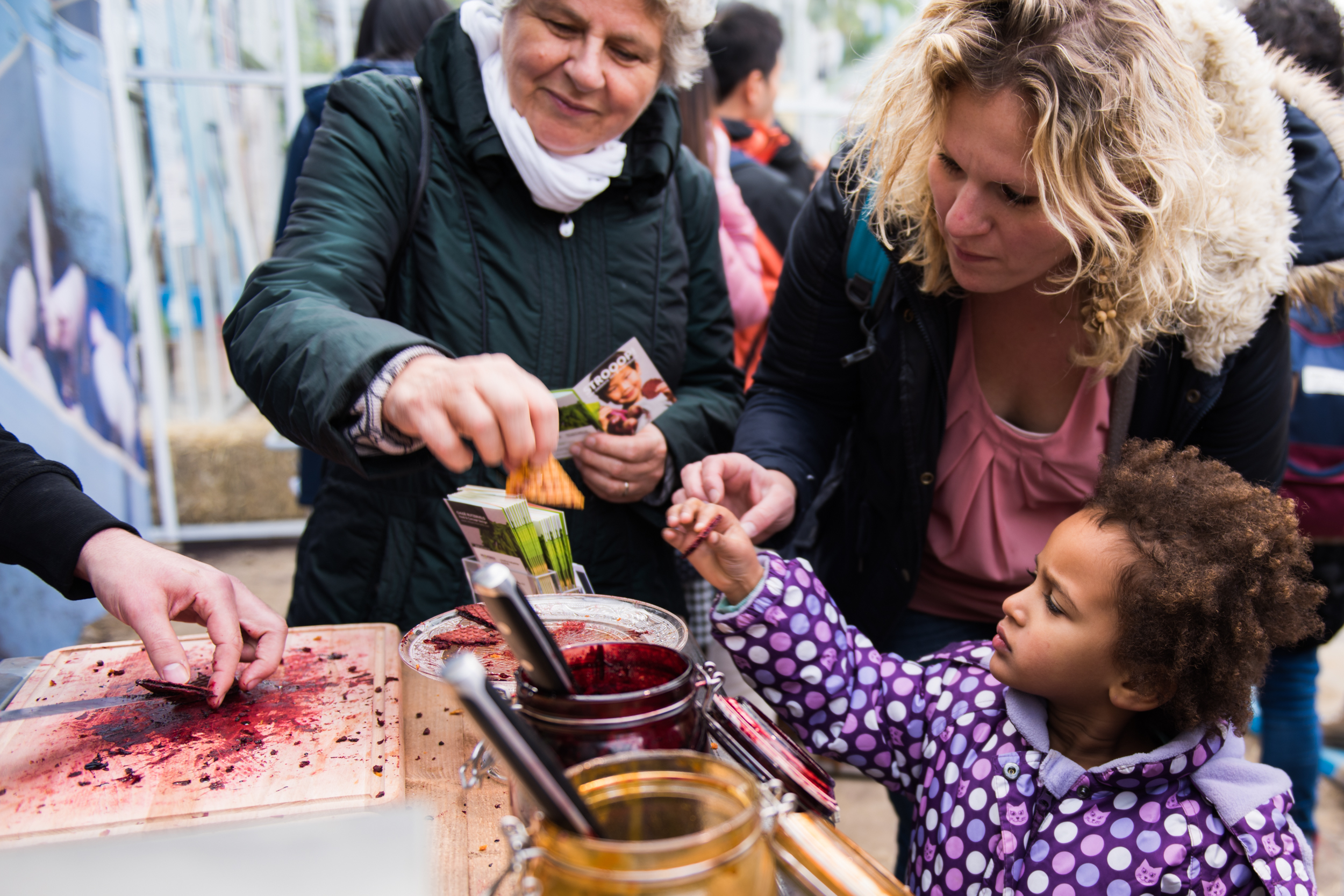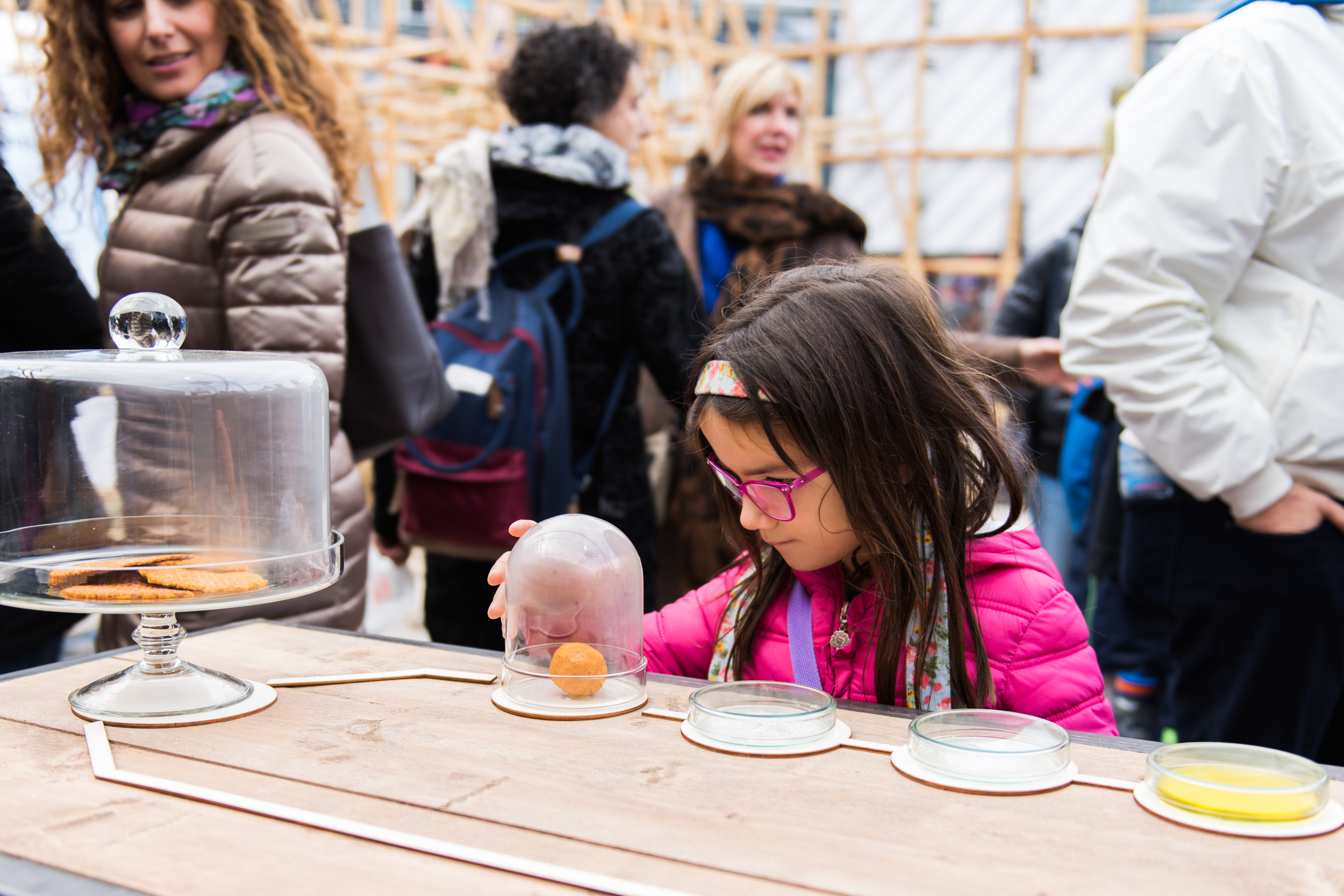STROOOP!
From waste to vegetable stroopwafel
Year of project: 2016
In collaboration with: Proverka, Martin Schreiber (Food Technology Wageningen University & Research)
Made possible by: stuurgroep LIB (Landbouw Innovatie Noord-Brabant)
Awards: Nominated for Dutch Design Award ‘17, Food100, DJ100, Creators Award
Video: From carrot to stroopwafel
Step one: weird, damaged or leftover veggies
STROOOP! PROJECT
STROOOP! presents the first plant-based stroopwafel made from local byproducts of the Dutch vegetable industry. Each waffle is made out of 100 grams of carrot or beetroot. They are a great source of dietary fiber and free of gluten, added sugar and food-colorings.
The project explores creative ways to turn byproducts of the vegetable industry into high-quality products by making smart use of the natural characteristics of vegetables. It demonstrates that the use of byproducts and rejected vegetables can go far beyond making boring soups and sauces. At the same time, it educates the consumer about what’s inside our food and questions their perception of certain products.
“How can we turn waste streams into delicacies by making smart use of their natural properties?”
Step two: turn juice into syrup, fiber into dough
“How does our perception of an ingredient change from “healthy and natural” to “unhealthy and unnatural”?”
CHANGING PERCEPTION
The STROOOP! project started when I was preparing dinner. I took some sweet potatoes out of the oven and saw a kind of caramel-like substance running out of the potatoes. It fascinated me that something we perceive as a ‘healthy vegetable’ could be so easily turned into something extremely sweet that we would see as unhealthy.
We grow up learning that fruit and vegetables are good for us, and that pastries, sweets and chips are not and should be consumed with moderation. As it turns out, it’s not as simple as that.
Tuberous plants such as (sweet) potatoes, beets and carrots contain lots of carbohydrates, which are built from sugars, starches and fibers. Heating the potatoes caused the complex carbohydrate chains (disaccharides) to break down into simpler glucose molecules, which resulted in the sweet potato releasing its sugars and “becoming sweet” during the baking process.
It made me wonder how consumer perception of a given product could shift from “healthy and natural” to “unhealthy and unnatural.” If we were to take the natural sweetness of the potato, and turn it into a completely different “type” of product, with virtually no additives, would people then—regardless of the type of product—consider it healthy, because it’s entirely made from vegetables?
Step three: bake waffle and fill with syrup
A COTTON CANDY FANTASY
Cotton candy is undoubtedly the opposite of a healthy product. So how better to question the large amount of sugar present inside the sweet potato than by turning it into cotton candy? And so, the challenge and experimentation began.
Yet as cotton candy is made from sucrose (the sugar crystals you put into your coffee), and the sugar present in sweet potatoes is maltose (which is glucose), the experiment didn’t succeed. It was technically impossible to make cotton candy out of a sweet potato, as you cannot make sugar crystals from glucose. On the advice of a plant biologist I turned to carrots and beets, as these do contain sucrose. But these experiments also failed due both to applying the wrong method and to a lack of equipment—and patience. However, what I learned from these failed experiments was how to generate delicious vegetable syrups, with a stack of fibers as a residual product.
Considering my initial challenge was to use a single portion of a root vegetable to create an entirely different product, the fibers also had to be processed into the final product. Suddenly it became clear: Why not make vegetable stroopwafels? A modern, plant-based version of a typical Dutch delicacy (two waffles with a layer of syrup in between). A radiant way to communicate the story; stroopwafels are familiar, loved by many, and most importantly, delicious!
“In the end the public saw the STROOOP-wafel as a product somewhere in between a vegetable and a fatty, sugary snack. ”
MAKE YOUR OWN STROOOP-WAFEL
Not every carrot or beet has the same water content. The recipe for the waffle therefore cannot be standardized when using the fiber and juice from whole produce. It might take some trial and error before you end up baking the perfect waffle. If you only mix and bake one waffle at a time, it’s easy to adjust the recipe for the next waffle if the mixture was too sticky, wet or dry.
Mix it up! Once you feel comfortable experimenting with the basic waffles, you can basically create any kind of stroopwafel you can think of! What about a fresh summer variation with cucumber, fennel, mint and pineapple syrup? Or turning your favorite dish into a stroopwafel? Just imagine what a spaghetti Bolognese stroopwafel would taste like…
You can find the recipe in my book: Food Futures - How Design and Technology can Reshape our Food System on page 60. Or, you can just try something yourself!
Summer Stroopwafel | Pineapple syrup with a fresh fennel, cucumber and mint waffle
STROOOP! launch during Dutch Design Week 2016









